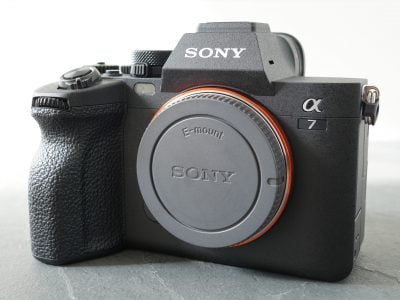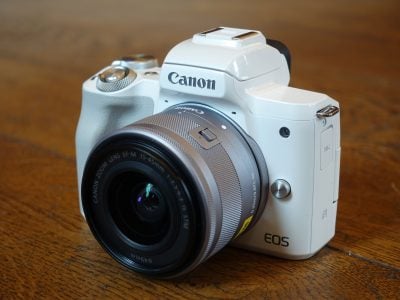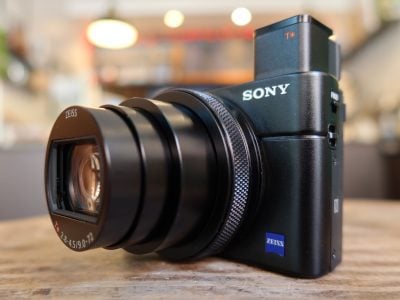Olympus E-500 / EVOLT E-500 review with Zuiko Digital 14-45mm f3.5~5.6
-
-
Written by Gordon Laing
Unlike the slightly unconventional looks of the earlier E-300 and new E-330 models, the Olympus E-500 is styled like a traditional digital SLR.
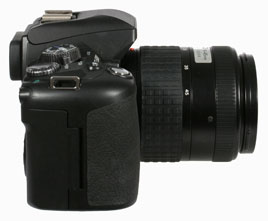
Measuring 130 x 95 x 66mm, it’s roughly the same size and shape as Canon’s EOS-350D / Digital Rebel XT, although the grip’s a little wider and feels slightly more professional with a thin rubber coating. There’s also more space between it and the lens barrel for your finger tips.
The body’s built from fibre reinforced polycarbonate and feels slightly more solid than several of its budget rivals – there’s certainly no creaks to worry about.
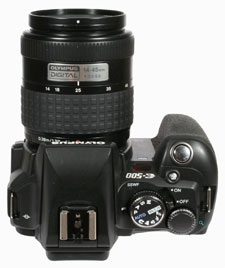
The control layout borrows a great deal from the 350D / Digital Rebel XT, with many buttons and dials in pretty much the same places.
The upper right surface of the body houses the main command dial, sporting the usual Auto, Program, Manual, Aperture and Shutter Priority modes, along with a Scene option which allows you to choose between 14 presets; the five most common scene presets can alternatively be accessed directly from the command dial. Exposures from 1/4000 to 60 seconds and an eight minute Bulb are available, while the flash sync is at up to 1/180. Like the Canon, the power switch is fitted around the right side of the command dial.
A thumbwheel is used for most adjustments, either by itself, or while holding a button down, such as for exposure compensation. Annoyingly though it’s possible to spin the dial and not have every step registered by the system – so if you’re in Shutter or Aperture priority for instance and spin the wheel quickly to rapidly change the setting, you may find only a few steps actually take place. This can be quite infuriating if you’re used to a camera which responds to every click of a wheel.
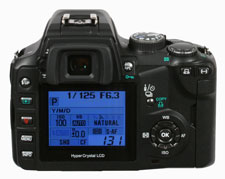
Again following Canon’s layout, four buttons to the right of the monitor allow you to adjust the White Balance, Auto Focus, ISO and Metering modes. This can be quite a laborious process though since you can only move left and right between the options, and not use the up and down buttons to jump around more quickly – this makes switching from, say, 100 to 1600 ISO slower than it could be.
In one final nod to the Canon control layout are five buttons which run down the left side of the screen: four have the same menu and playback functions as the 350D / Digital Rebel XT, although the top one pops up the built-in flash. Flash modes include the choice of Auto, red-eye reduction, slow syncro with red-eye reduction, slow syncro, rear curtain slow syncro, fill-in and off. Flash compensation settings of +/2EV are available.
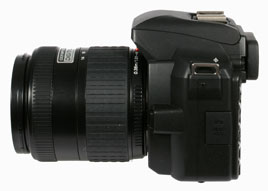
On the left side of the body is a single connector which doubles-up for both USB and video-output, depending on which of the supplied cables are plugged-in.
The E-500’s powered by a single Lithium Ion battery pack, rated at 7.2V 1500mAh and the camera’s supplied with a mains recharger. The remaining charge is shown as a three segment indicator on the main screen, more about which on the following page.
